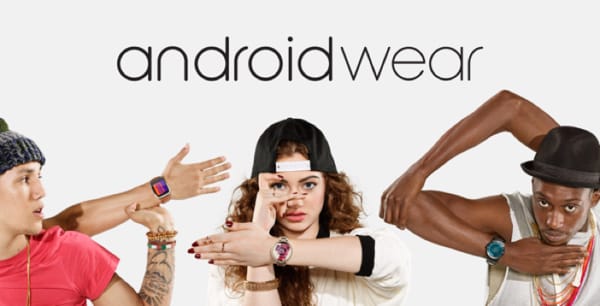Google I/O - five things we care about: wearables

The Google I/O developer conference is now but a distant memory, but the search giant provided some insights into its plans for the year ahead and discussed how its various products are being improved.
Android M, the next version of the world’s most popular mobile operating system, was one of the highlights (you can read more about it here), as was virtual reality in a joint partnership with GoPro.
But Google also discussed plans for its Android Wear platform, with new features and improvements that will make their way into the next generation of smartwatches and wearables. For now, Google’s wearable efforts have primarily revolved around Android Wear and Google Glass, but it’s Android Wear that shows the most promise in the near term.
Google’s wearables effort
This week, research firm IDC stated that the wearables market will grow to 72.1 million units sold in 2015, a figure that includes both “basic wearables” and “smart wearables”. This includes smartwatches, eyewear, clothing, fitness trackers, and many other wearables that don’t have screens.
Last year the basic wearables outsold smarter products by a factor of 4 to 1, with 22.1 million compared to 4.2 million respectively. But in 2015 IDC says the smart wearables will have closed the gap, and that of the 72.1 million units sold, 39 million will be “basic” and 33.1 million are expected to be of the “smart” variety.
Apple has obviously helped bump up the numbers, and has by some estimates already sold several million Apple Watch devices in the US alone since its April launch – more than all other Android-based smartwatches combined.
But Google isn’t just sitting back and letting Apple own the wearables market – it’s been working on getting its Android Wear platform up to speed so that companies such as Samsung, HTC, LG and Motorola can bring out a new, improved generation of Android Wear smartwatches.
So here’s a rundown of some of the Android Wear announcements from Google I/O this year.
Apps that are always on
Google has introduced what it calls always-on apps. That means a class of apps that will stay active even when the watch is in a low-power mode. The idea is that these apps provide information on your wrist that you can quickly glance at, at all times. For example, directions in Google Maps that mean you don’t need to keep taking your phone out.
Wi-Fi and GPS support
The new version of Android Wear adds something that Apple Watch doesn’t support (yet). Using Wi-Fi it will still be able to receive and show notifications when you don’t have your phone to hand. If you left the phone at home, for example, you’d still get notifications as long as you’re on a Wi-Fi network somewhere.
Hopefully one day smartwatches will include a kind of virtual SIM and will simply be able to connect to your mobile operator via a cellular connection, but that day seems a way off yet…
New and improved app launcher
Android Wear will, in future, feature a special app launcher to make it easier to launch apps, rather than finding them via dozens of menus. Voice support is also included, so you can also just ask Google to launch an app and it will appear.
It remains to be seen exactly how the app launcher will function, as the company has eschewed Apple’s app icon approach on the home screen (which is admittedly quite fiddly), but the voice option is a great idea.
Wrist-based gestures
Google showed off something that it calls wrist gestures. These allow the wearer to navigate notifications and other information just by flicking your wrist. For example, a flick outwards selects the next item, and a flick towards you chooses the previous one.
There are many gestures planned, each of which uses the various sensors on the watch to determine the correct gesture. It’s a fairly cool feature that should make it easier to navigate.
Draw Emoji
Apple Watch has the ability to draw on the screen and send those drawings as an animation that plays on someone else’s watch. It’s a cool feature, but Google has in some ways gone a step further and implemented a feature that lets you draw emojis on the watch, which are then recognised and converted into proper pictures.
For example, draw a smiley face on the screen and the watch converts that into the proper emoji icon.
Thousands more Android Wear apps
Google says that there are now 4,000 Android Wear apps on the Play Store, a year after it launched. However, the Apple Watch had more than 3,500 apps on the launch day, and of course hundreds more are being added every week.
Google announced that it would make improvements to the quality of apps on Android Wear however, and showed off Uber and Foursquare at the conference to hammer home the point.
Final words
Besides the new Android Wear features that Google demonstrated, there were many under the bonnet updates and improvements that should make the whole smartwatch experience much better. With the Apple Watch already selling like hot cakes and new features on the horizon, Google is working hard to enhance its platform. There are expected to be a plethora of new smartwatches (and wearables of all kinds) released during the rest of the year as the battle heats up.
It will be an interesting few years in the wearables space, ultimately benefitting consumers with slicker, more functional and capable devices.






